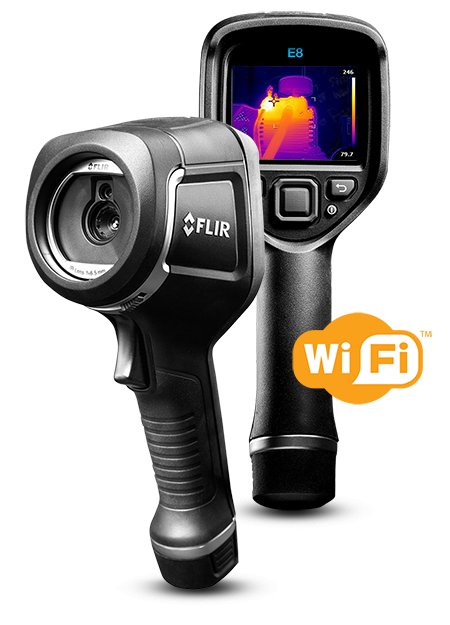- Call Us
1300 29 35 32 - Email Us
sales@cwelecautomation.com.au

In this blog, we’ll explore what thermal imaging is, delve into its advantages for industrial applications, and discuss the optimal frequency for utilization in an Australian and Victorian industrial context.

What is Thermal Imaging?
Thermal imaging, or infrared thermography, is a technology that captures and visualizes the heat emitted by objects or surfaces. Unlike conventional imaging, which relies on visible light, thermal cameras detect infrared radiation. Every object with a temperature above absolute zero emits infrared radiation, and thermal cameras translate this radiation into visible images, commonly known as thermograms.
Benefits for Industrial Clients in Australia:
- Energy Efficiency and Facility Maintenance:
- Identify energy waste: Thermal imaging is instrumental in detecting areas of heat loss in industrial facilities, aiding in energy-efficient improvements by pinpointing insulation gaps, leaks, or inadequately sealed structures.
- Facility maintenance: Regular thermal inspections can reveal hidden issues such as faulty insulation, electrical problems, or equipment malfunctions that may not be apparent during a visual inspection.
- Electrical Systems Maintenance:
- Early detection of issues: Thermal scans are a crucial tool for identifying overheating electrical components, allowing for preventive maintenance and reducing the risk of electrical failures and fires.
- Enhanced safety: Routine thermal inspections of electrical systems contribute to the overall safety of industrial spaces by identifying potential hazards before they escalate.
- Mechanical Equipment Monitoring:
- Predictive maintenance: Thermal imaging enables the early detection of mechanical issues in equipment such as motors, HVAC systems, and industrial machinery, facilitating predictive maintenance to minimize downtime and extend equipment lifespan.
- Cost savings: Proactively addressing mechanical issues through regular thermal inspections helps industrial clients avoid expensive repairs and replacements, leading to significant cost savings over time.
How Often Should Thermal Imaging be Conducted in Australian Industrial Settings?
The frequency of inspections in industrial settings within Australia depends on the specific application and the needs of the client. However, here are some general guidelines:
- Energy Efficiency and Facility Maintenance:
- Annual thermal imaging inspections for routine energy audits and facility maintenance.
- Periodic inspections after major weather events, such as storms or extreme temperature fluctuations, to assess potential damage.
- Electrical Systems and Mechanical Equipment:
- Regular thermal inspections of electrical systems and mechanical equipment are recommended at least once a year.
- More frequent inspections, such as quarterly or semi-annually, in industrial settings with heavy machinery or critical equipment.
- Special Circumstances:
- Before and after major renovations or construction projects to ensure the integrity of structures and systems.
Conclusion:
Thermal imaging has become an indispensable tool for industrial clients in Australia, contributing to enhanced efficiency, safety, and cost-effectiveness in various applications. From energy audits to preventive maintenance, the benefits are diverse and vital for maintaining the integrity of industrial facilities. By incorporating regular thermal inspections into their routines, industrial clients can proactively address issues, reduce downtime, and optimize the performance of their facilities, ultimately creating a safer and more efficient industrial environment.
CW Electrical & Automation use the Flir E8 thermal camera to conduct thermal scans on large industrial plants throughout Victoria.
Learn more about how CW Electrical & Automation can help you with your thermography needs here: https://www.cwelecautomation.com.au/thermal-imaging/
